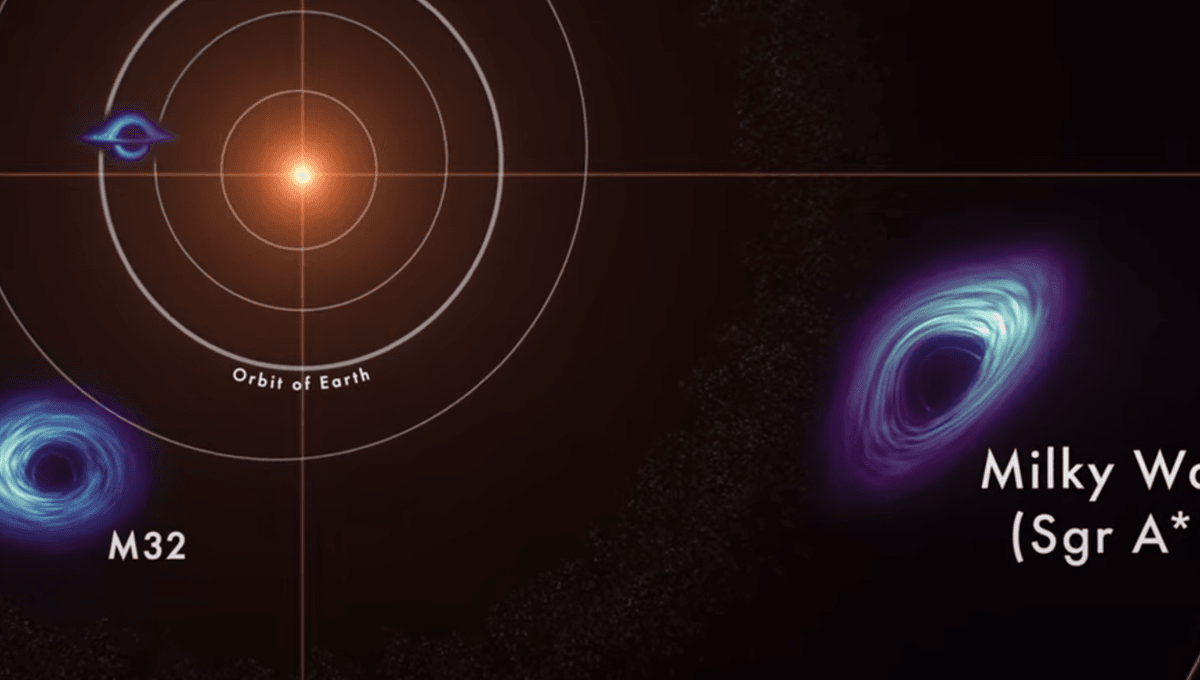
Supermassive black holes are impressive objects. They can weigh from a few hundred thousand to billions of times the mass of the Sun. A gravitational pull from which nothing, not even light, can escape. These objects are incredibly dense, and density is about mass and volume so it’s important to understand how big these giants are. Fortunately, NASA has just released a fantastic animation to show just how huge these incredible objects can get.
Included are some of the most famous supermassive black holes, such as Cygnus A or the small black hole at the center of dwarf galaxy J1601+3113. Obviously, Sagittarius A* had to make an appearance, it is after all our friendly neighborhood supermassive black hole, sitting quietly at the center of our galaxy, and one of the two we have directly imaged.
The animation also shows the closest supermassive black hole pair to Earth, inside galaxy NGC 7727. They have wildly different masses: one weighs 6 million solar masses and the other more than 150 million Suns. The pair are about 1,600 light-years apart and are destined to merge within 250 million years – a collision that will release lots of gravitational waves.
“Since 2015, gravitational wave observatories on Earth have detected the mergers of black holes with a few dozen solar masses thanks to the tiny ripples in space-time these events produce,” Goddard astrophysicist Ira Thorpe, said in a press release accompanying the video. “Mergers of supermassive black holes will produce waves of much lower frequencies which can be detected using a space-based observatory millions of times larger than its Earth-based counterparts.”
The Romans used to say Dulcis in Fundo, the best (sweetest) for last. We don’t know if these two are the best but they certainly embody the super in supermassive. There is of course M87*, the other black hole that got a direct picture, which has been recently enhanced with AI. This cosmic scoundrel has also been caught releasing its famous jet on camera. M87* already dwarfs the solar system… and then you see the size of TON 618. This is currently believed to be the heaviest supermassive black hole, and the heaviest object in the universe, containing around 60 billion times the mass of the Sun inside itself.
Source Link: NASA's New Black Holes Animation Will Make You Feel Like An Insignificant Speck Of Carbon